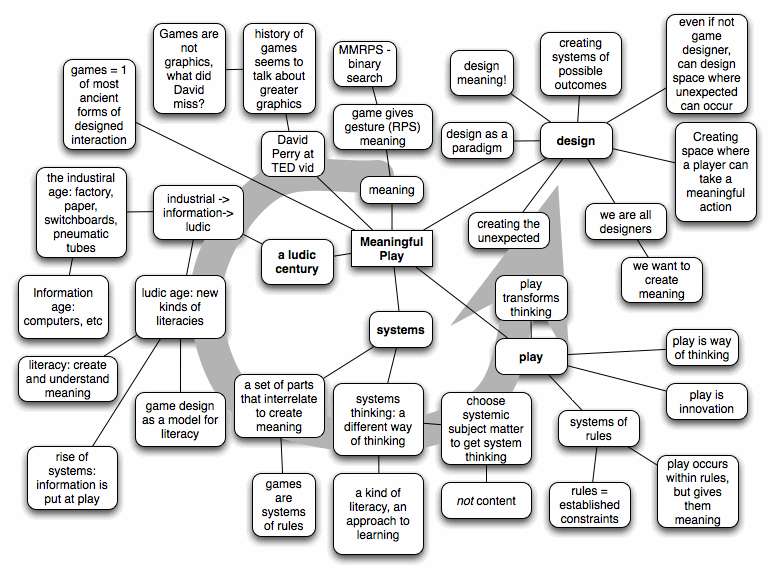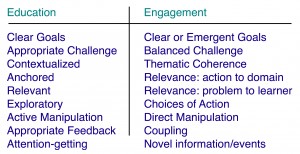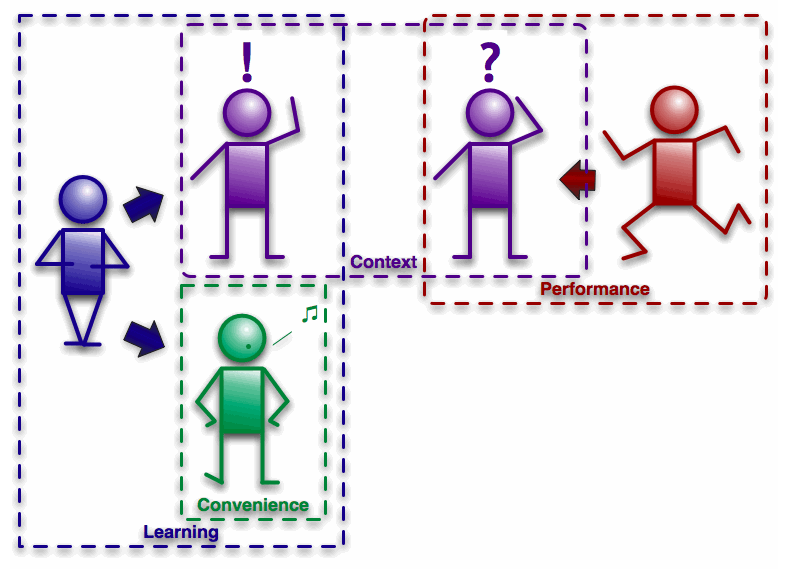In the conversation with Kris Rockwell of Hybrid Learning I mentioned previously, we talked about the definition of mobile learning. We both agreed that it wasn’t about loading your average asynchronous elearning course onto the phone, and that it was more about performance support. Brevity is the soul of mobile, as well as wit. And I also am happy to think of mobile as an augment to formal learning: reactivating knowledge, distributing practice, contextualizing learning, and even performance capture. But then we came to the ‘grey’ area of so-called microcourses.
I have mentioned the possibility in the past, sort of on faith rather than having thought through the actual design. Kris mentioned cited a colleague who talks about “2 minute courses” (which I can’t find on the interweb), but I really have to wonder what it might really mean. What learning objectives could we meet that way? I can see small chunks of content delivery, but that’s more learning augment than course.
To me, a full course has to have an introduction to reactivate relevant knowledge, a model presented to guide performance, an example that shows how the concept gets applied in context, and a chance to practice applying the concept to another context. Finally, some post-practice reflection and closing of the learning experience should occur.
If it’s less than that, e.g. the learner’s primed because it’s in the moment, the information is pared down to the minimum to successfully get the learner past the immediate point, it’s performance support. Or, if the learner’s motivated and receptive already, and it’s just an information update, not a new skill, then again I don’t think of it as a course.
On the other hand, it may be that just a rethink of something they’ve been doing, a ‘tuning’ of an approach, could make sense. Or, perhaps, regular mini-presentations and small practices of a different way to look at the same thing. Though that might be distributed learning, not a mini-course, which would be OK.
So I’m okay if it’s just a semantic thing, and we’re talking learning augment or performance support. And, I’m willing to think there might be limited learning topics that a quick cartoon, a simple model, an illustrated example (comic strip, brief animation), and a single practice (read: multiple choice question) with feedback that’s also a summary might work. But none are springing to mind.
So, are there cases you can think of that would qualify? Is microlearning for real?

 At core was an alignment between what makes effective learning practice, and what makes engaging experiences. Looking across educational theories, repeated elements emerge. Similarly with experience design. It turns that they perfectly align. If you recognize that, and can execute against it, your learning will be greater than the sum of the parts, and will both seriously engage and truly educate. Learning can, and should, be hard fun!
At core was an alignment between what makes effective learning practice, and what makes engaging experiences. Looking across educational theories, repeated elements emerge. Similarly with experience design. It turns that they perfectly align. If you recognize that, and can execute against it, your learning will be greater than the sum of the parts, and will both seriously engage and truly educate. Learning can, and should, be hard fun! I’ve argued before that mobile is not really about learning, but about performance support. That said, there are roles for mobile in courses, either as a learning augment or even microcourses (but not putting a whole elearning course on a mobile device). In talking about mobile, I distinguish between convenience and context.
I’ve argued before that mobile is not really about learning, but about performance support. That said, there are roles for mobile in courses, either as a learning augment or even microcourses (but not putting a whole elearning course on a mobile device). In talking about mobile, I distinguish between convenience and context.